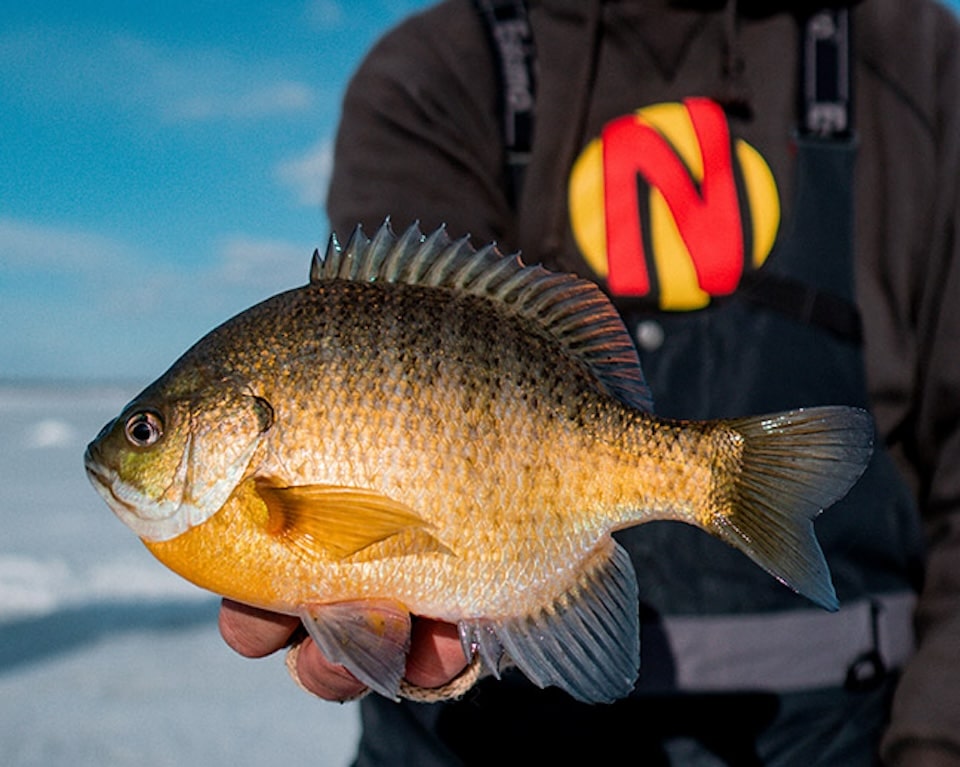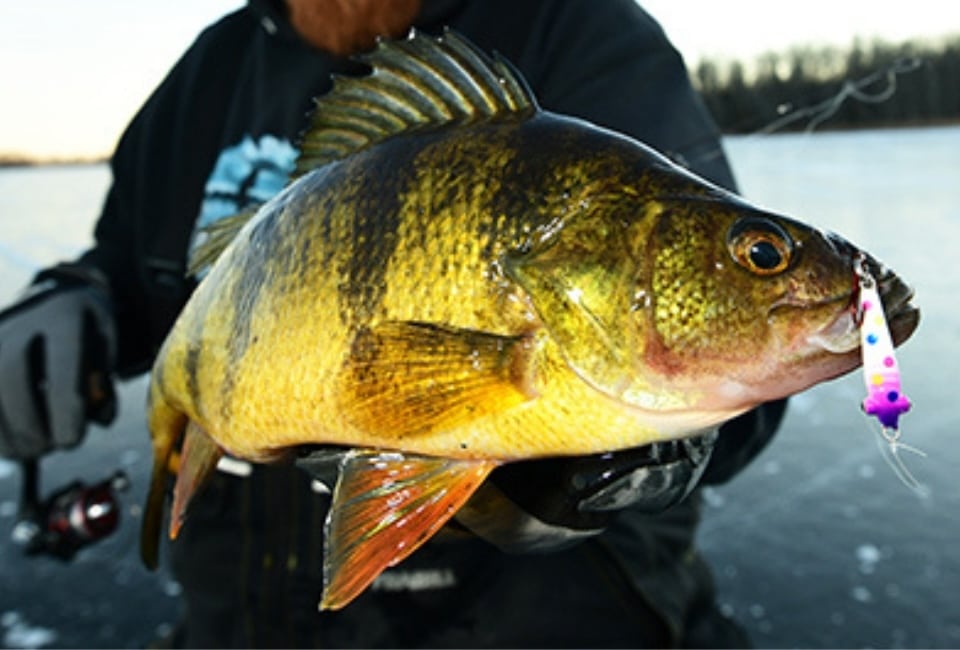Two experienced Northland Pros and ice fishing guides drill into remaining season specifics, including walleyes, panfish, safety and more.

It’s been an unusual weather winter for ice anglers – warming trends followed by colder nights, a few colder days here and there—but no consistent ice, which has made ice traffic difficult.
And now that we’re in mid-February—with lengthening days, greater sun exposure, and fish movements—it’s time to talk transition time from mid- to late-ice.
Below, veteran ice guide Brian “Bro” Brosdahl and Mille Lacs Lake expert guide, Brad Hawthorne, literally drill into the specifics of the remaining hardwater season.

ICE SAFETY
Before we get into the presentation specifics recommended, it’s best to remind anglers that there’s no such thing as 100% safe ice. While the MN DNR puts out ice thickness guidelines for certain types of travel, keep in mind those recommendations are for solid, clear ice—far from what we’ve experienced this year. Much of the ice across the belt has formed, melted, thawed, and reformed, leading to inconsistent travel surfaces. There’s been little this year as far as truck travel, with most anglers fishing from ATVs, snowmobiles, side-by-sides, or on foot.
Northern MN guide, Brian “Bro” Brosdahl is constantly monitoring ice quality.
“Right now, we’ve got a snap of colder weather, but it’s supposed to warm up again soon. The first thing: forget about driving trucks and big permanents on the ice. Fish from machine or on foot. And stay away from any areas of current. I don’t ever remember a winter where we had an inch of rain in February. The rivers and creeks raised and the ice started to erode from underneath. Stay away from cracks and heaves, and given the long period where we didn’t have a lot of snow, keep your eye out for shallower areas of vegetation that absorb the sun, as well as bulrush beds. You’ll also want to start looking for southern accesses which should hold up better with decreased sun throughout the day. There are still plenty of spots to fish, just stay away from problem areas. And use established resort roads on the bigger lakes,” offers Bro.
Bro adds: “Wear some kind of flotation—a suit or PFD—carry spikes around your neck, and then a throw rope. Everything you need packs easily in a sled and is there when you need it. And don’t forget cleats on your boots so you don’t fall and get a concussion.”
Mille Lacs Lake Guide, Brad Hawthorne, has similar info to add, but with a slight twist given the size of the lake and its warmer, central MN location.
“There’s anywhere from 8 to 22 inches of ice on Mille Lacs, but it’s not consistent. A lot of the ice is white because of the repeated thawing and freezing, so it’s hard to get a good read on quality without looking at the ice itself.”
Along those lines, Hawthorne has a unique method of ensuring ice is safe for his clients, using both a chainsaw and a 4-inch Razr auger to take ice samples, examining it closely to see if any is honey-combed or solid.
“And if we drill a hole and water gushes out, we carry foot-long fence post pieces to plug them up. Instead of flooding out your whole road or your trail, you can just pop that post in. If it’s below zero, sure you can let the hole flood and refreeze, but above that you don’t want your fishing area to flood, and you want to be able to get stuff through drilled areas later and not worry about the weight on the ice,” instructs Hawthorne.
Read more here.
The Women's Outdoor News, aka The WON, features news, reviews and stories about women who are shooting, hunting, fishing and actively engaging in outdoor adventure. This publication is for women, by women. View all posts by The WON